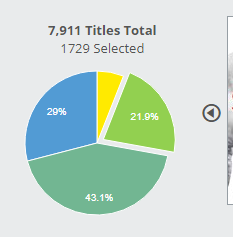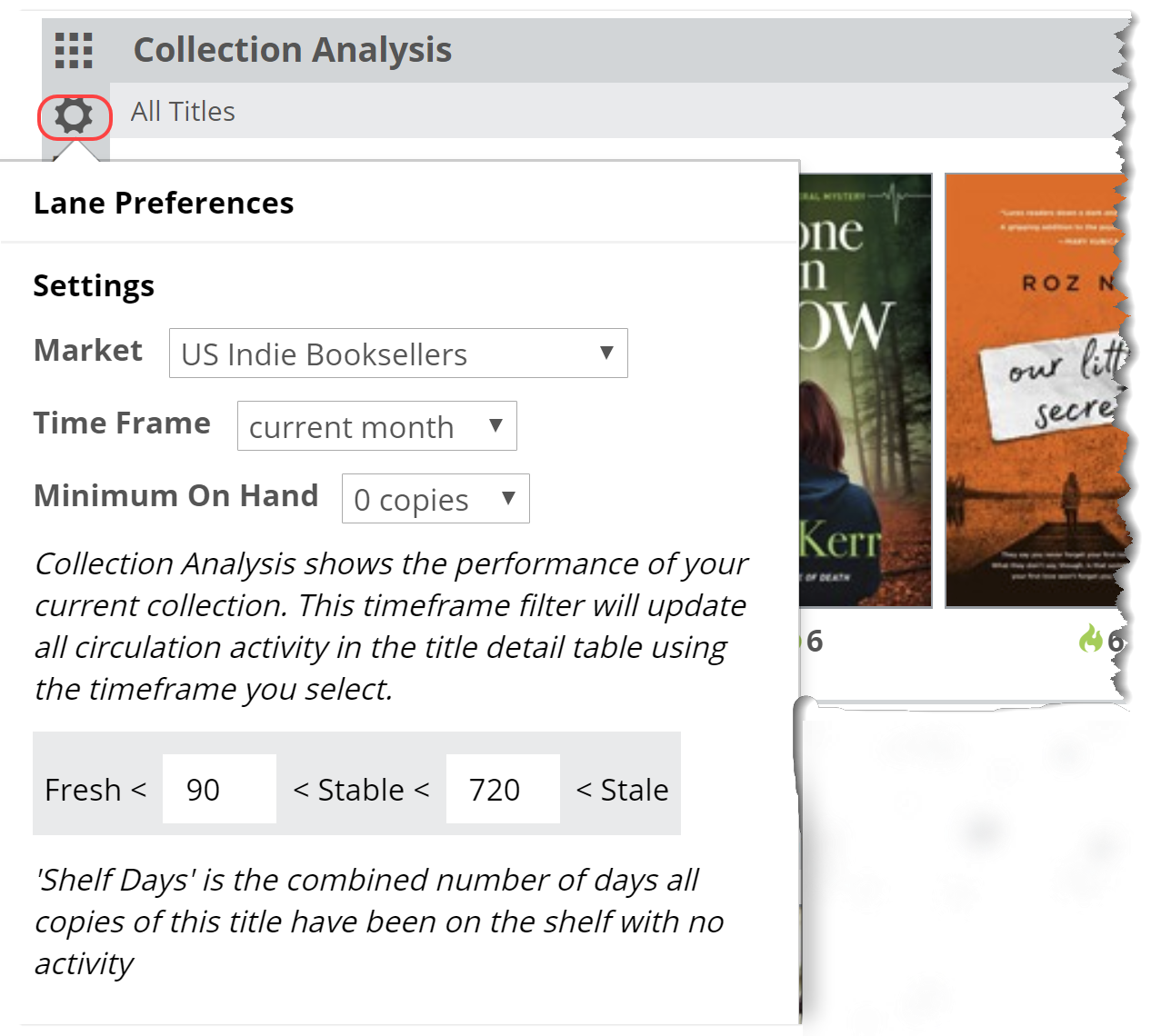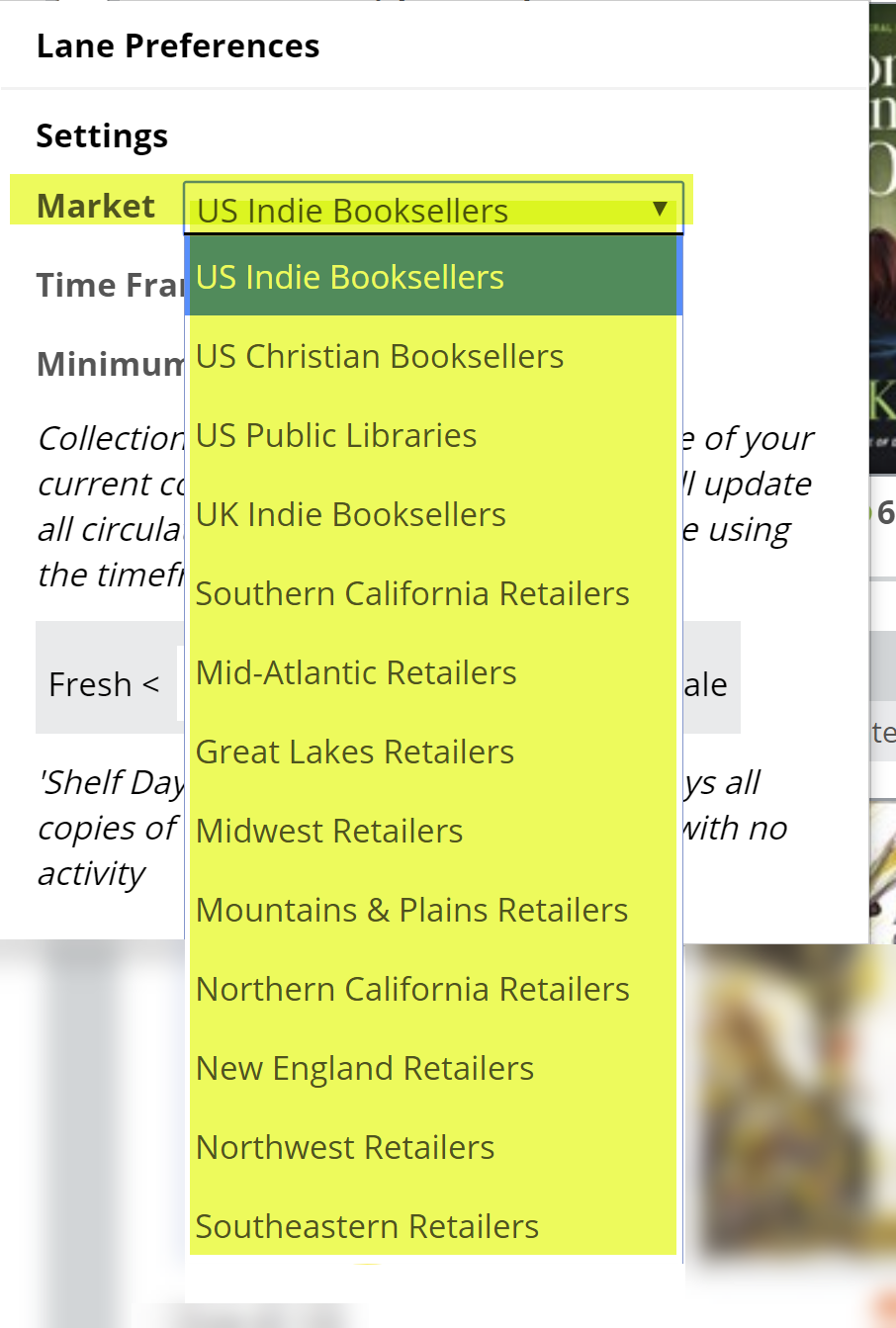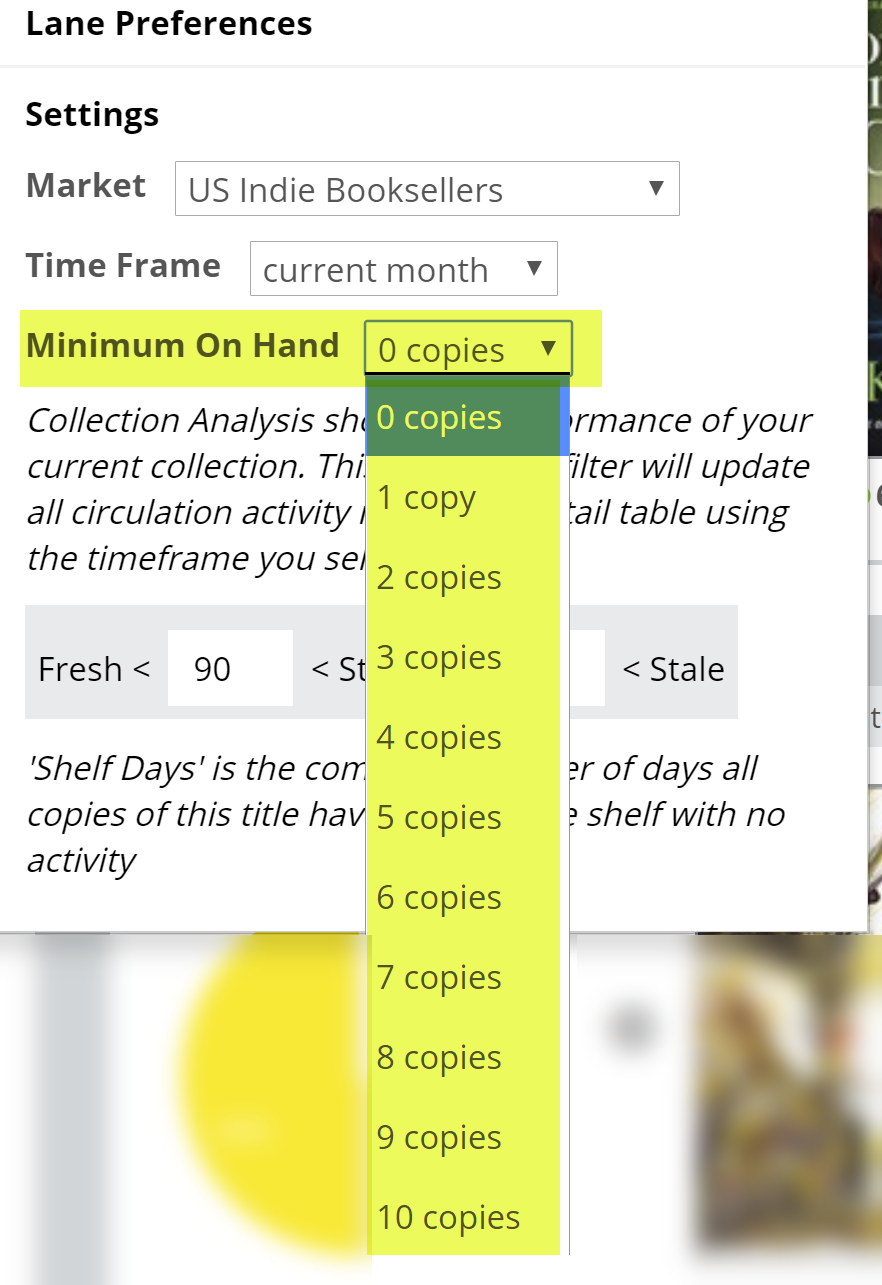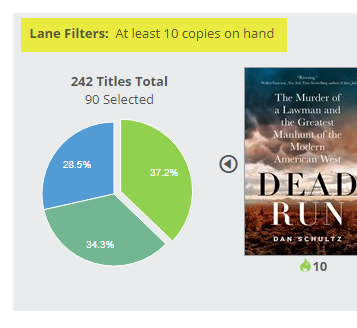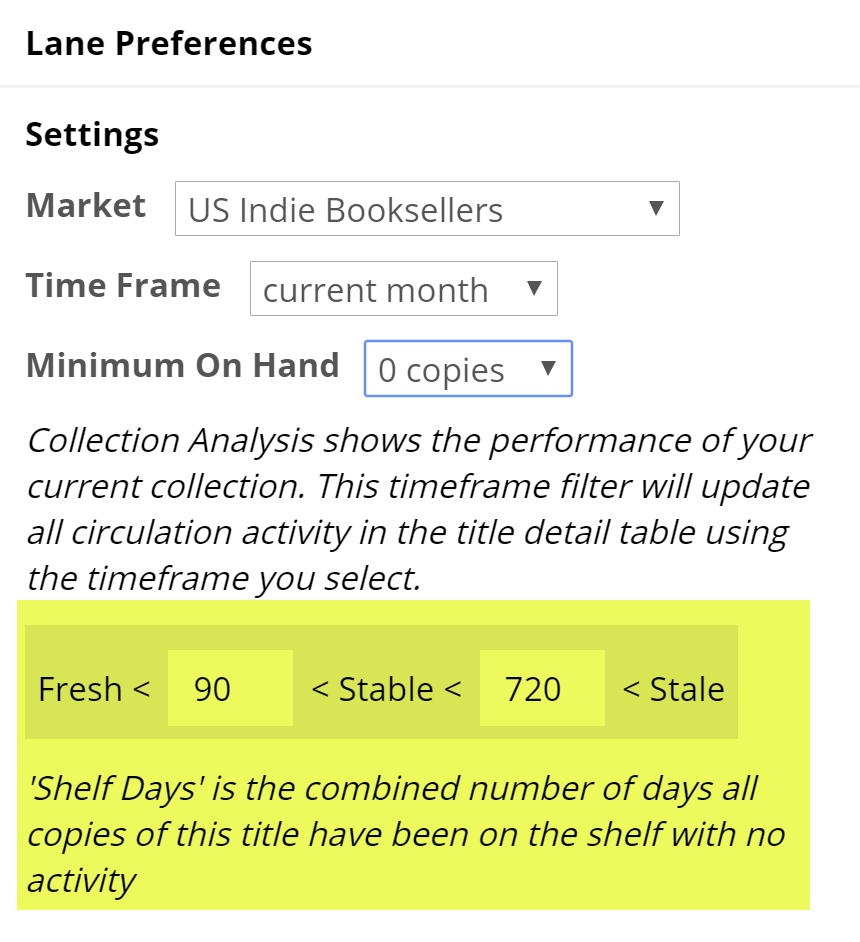The Collection Analysis graph will quickly show you how your collection is performing, using the Shelf Days. You can view your entire collection or use your saved filters to view smaller, targeted portions. Those Saved Filters can be quite intricate, if you wish. You could, for example, easily see how kids paperback books about pirates perform in your library, or combine a number of categories to measure a large swath of your collection all at once. Some users have created filter sets that represent physical areas of their branches, according to which of their categories are represented there. For example you can measure how categories in the front right corner of your kids section perform, and then see how that compares to those categories that live in the back left corner.
You can also, of course, just look at everything. Here’s an example of a small library branch’s adult fiction that is doing particularly well:
A slim 4.6% of their titles are “Stale/Cool,” while almost 42% are “Hot/Fresh.” Crazy!
Here’s another (slightly smaller) branch’s adult fiction Collection Analysis:
This one has a much larger percentage of Stale titles, at 29%. (That’s the blue slice of the pie) as well as a much smaller percentage of Hot (green) titles. So basically the second branch simply has more titles that have sat without circulating for longer. Both would probably be considered relatively healthy, although the first one is clearly meeting its patrons needs quite successfully.
So essentially what you’re doing with this tool is measuring the ‘health’ of your collection, a portion of it, or a specific grouping of titles, based on how/whether they’re circulating. Based on this information, you can easily create a list of titles to weed (or to raise some awareness via some more aggressive displaying) by simply printing out the list of Stale titles, edited if you wish.
This process can, at first, be daunting if it’s been a while since you’ve weeded. The one great and unavoidable truth of the book business, though, is that the books just never stop coming. It’s a good idea to make room, and to, let’s be blunt, own books that your customers want to read.
If your collection is a conversation of sorts that you have with your patrons, what they check out is just one part of their response. What they leave sitting on the shelf is the other part of the conversation, and one that is too often ignored.
Doing this analysis on a regular basis will make your collection smarter and better-informed, and more relevant for your patrons.
Collection Analysis Lane, Setting Your Parameters
As with everywhere else in your Analytics tools, you can set a wide variety of filters to narrow down the list of titles you want to check out.
Click the drop-down link next to the description of the lane to reveal a menu in which you can set a few parameters for this graph.
Here’s an explanation for each of your options:
Market:
You can select to view market results for your own market, or another market’s top-selling or top-circulating titles. In this particular tool, the graph itself will not be affected by this Preference setting. The Title Detail List’s Market data will reflect this selection.

Time Frame:
How far back would you like to look? Viewing results for 1 month back will essentially show which of your titles are hot and circulating right now. Looking farther back, like a year, will show a longer tail of activity, so to speak. Keep in mind that looking farther back will include other seasons, like the holidays, summer, etc. If you’re using this graph to generate a list of titles that should go away, looking farther back makes more sense.
Minimum on Hand:
Set this to “0” to see all titles, including the titles you currently have on order. Alternately, setting the Minimum on Hand to “10” means that you’re only going to see those titles of which you have big stacks.
In the case above, most are doing great, but some are languishing a bit. Good information to know! It makes sense to concentrate, initially, on those titles with which you’ve made the biggest investment.
Shelf Days:
Shelf Days are fully explained here. This essentially allows you to set an upper and lower performance measure on your inventory. So, how well, and how quickly, are your titles circulating? These thresholds are incredibly relevant in this lane.
Collection Analysis, Reading the Graph
The Collection Analysis graph is designed to show you the chunk of your library that you’ve selected (between your parameters and Saved Filters) and then show you how that selection of titles (or your entire collection) is performing in your library system or branch.
The performance measurements are based on the Shelf Days, of which you can get details here.
This graph will most often be used to find those titles with which your library is doing the best and the ‘worst.’ The Best titles would be those that you’re circulating at a brisk pace. The Worst performers are simply those titles that are not circulating, and have not done so in quite some time. This measurement can be a great way to gauge the relative health of your collection or even just a portion of it.
Note that Shelf Days are intended to give more weight to titles of which you own multiple copies. So a stack of 20 copies of a title should circulate pretty quickly to justify that larger expenditure.
So, to see those titles that could likely go away without your patrons even noticing, as sad as that may be, click in to that Cool/Stale (bright blue) portion of the graph. From there you can scroll through those titles or, more helpfully, click in to the Title Detail Grid.
From that list, you can create a spreadsheet you can use to create a weeding list.
You can, and should, also use this information to see which titles really do the best in your collection. You likely have a good idea, but it’s nice to have a precise idea. This helps you buy more intelligently for your library and for your patrons. Indeed, having the titles that your patrons want is sort of the point of it all. Having titles they will want…they just don’t know it yet… is sort of the point too, of course. Such an endeavor is both noble and fraught with missteps. Reacting to those missteps to clear them out and fill that shelf space with something new is a great thing.


